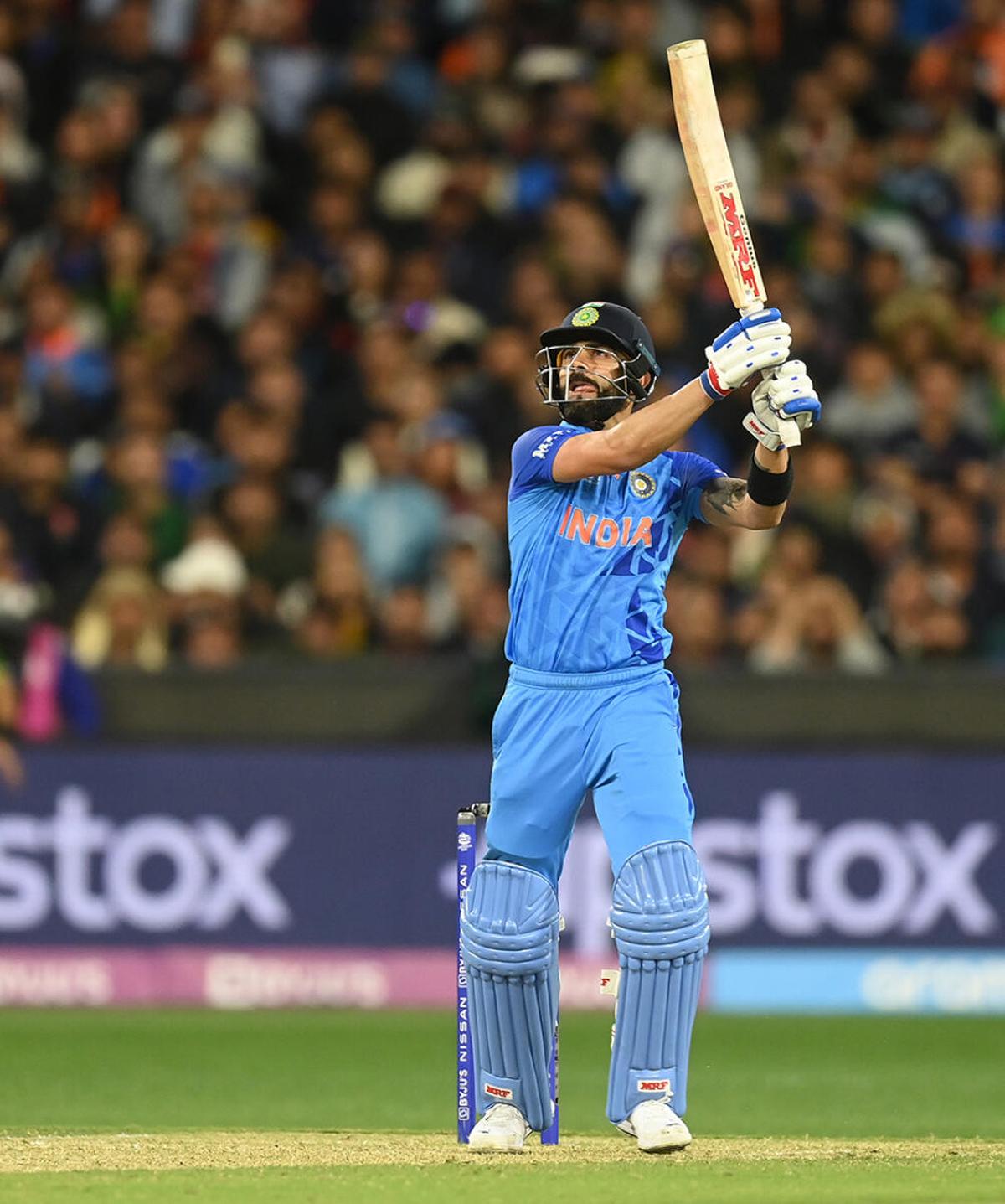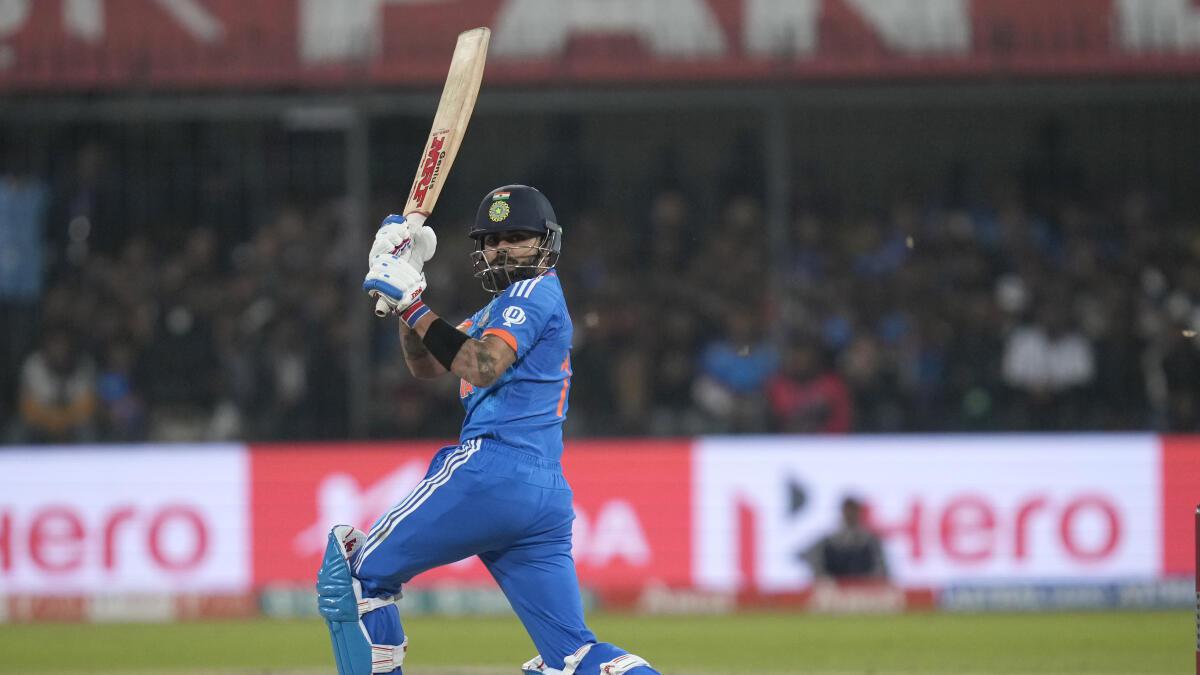T20 World Cup 2024 squad analysis: Kohli’s slowdown not keeping pace with changing times, but India still needs him
For the last three years, Virat Kohli’s approach to T20 cricket has been in question, but now he finds himself in yet another World Cup squad. The trade-off is that it leaves India short of a genuine finisher in the playing XI.
India’s approach to T20Is has historically mirrored its strategy in ODIs, prioritising wickets over boundaries. But there have been enough signs that that attitude is shifting, but perhaps at a glacial pace.
Kohli has high averages, and his strike rates tend to rise as the innings goes deeper. Kohli has an overall strike rate of a shade under 140 in T20Is at an average of over 53 over the last five years. For Royal Challengers Bengaluru, he averages less than 40 (35.07) and strikes way slower, at under 130 during the same timeline.
Looking at what Kohli has been doing in the PowerPlay and the overs after, it clears up the picture further. For India, in the last five years, Kohli has batted slowly at the start, going at 111.28, and then raised it to 128 between 7 and 16. But he gets stuck into the bowlers if he makes it to the last four, going over 213. In the Indian Premier League (IPL), for the same timeline, Kohli’s PowerPlay, middle-over, and death-over strike rates are: 129.69, 116.61, and 206.50.
In fact, Kohli’s overall strike rate at No. 3 — where he normally bats for India in T20Is — in the last two years has hovered in the early 130s while the average strike rates for one down for teams like South Africa, Australia and West Indies are north of 150. The No. 3s of England, Bangladesh, Sri Lanka, New Zealand, Pakistan and Afghanistan have a lower combined strike rate.
Achilles Heel
Kohli is scoring at a strike rate of 147 in this year’s IPL. Only once has he ever scored quicker, and that was in 2016 (152.03), when he amassed 973 runs — the most by any player in an IPL season. Kohli scored his eighth IPL hundred against Rajasthan Royals this year, with his 113 not out against Royals being his joint-highest score in the T20 league. But he also took 67 balls to get there, making it the joint-slowest hundred in the IPL, along with Manish Pandey’s century against the now-defunct Deccan Chargers in 2009.
Kohli’s innings in Jaipur was a perfect microcosm of his T20 batting. His strike rate was 190 in the last 22 balls he faced. But for the first 25 balls, he struck at under 130, while for the next 25, he went at 156. It is evident by now that Kohli, the T20 batter, is at his destructive best when he is operating between overs 17 and 20.
However, Kohli has also seemed to embrace a less risk-averse approach to batting inside the first six overs in this IPL, looking to hit over the top to find the fence. “They probably want me to come hard at them so they can get me out or have an early breakthrough. But I feel like if I’m set and if I bat beyond six overs, then our chance of getting good totals becomes that much better,” Kohli had said after his hundred against Royals.
Kohli is a classical top-order batter who has often gone searching for intent when the demands of the T20 game merit a modern upgrade on a role where India does not lack options anymore. Kohli loves pace on the ball, which partly explains why he is so good in the death overs, a phase where opposition captains normally turn to their faster bowlers.
Kohli, of late, has been struggling to maintain his momentum outside the PowerPlay, especially against spin bowling, making him susceptible to retaining strike from more destructive players who are trained to excel in this phase. In effect, Kohli’s ability to impact the game positively is hugely determined by whether he survives the PowerPlay as well as the middle overs, but that sometimes leaves the rest of his teammates more ground to cover. It is a formulaic approach that can be extremely predictable and, hence, vulnerable to being found out.
The ICC Phenom
That said, the top four of captain Rohit Sharma, Yashasvi Jaiswal, Kohli, and Suryakumar Yadav were more or less decided even before the official squad announcement was made. The selectors and Rohit are taking a punt on Kohli’s ability to perform under pressure. Kohli has shown a strong temperament when it comes to big games. He respects his opponents but is not intimidated by them. This quality is especially important in high-pressure tournaments where nerves can get the best of players. A great example of Kohli’s composure came in the 2022 T20 World Cup chase against Pakistan at a packed MCG in Australia. Kohli’s strike rate was a jaw-dropping 278.57 at the death that night as he waltzed to 39 off 14 balls. At one point though, Kohli was batting on 12 off 21 balls. Kohli’s average in nine successful run chases at the T20 World Cup is a scarcely believable 518. He has seven fifties and has been dismissed only once.

Virat Kohli hits a six during the ICC Men’s T20 World Cup match between India and Pakistan at the Melbourne Cricket Ground.
| Photo Credit:
GETTY IMAGES
Virat Kohli hits a six during the ICC Men’s T20 World Cup match between India and Pakistan at the Melbourne Cricket Ground.
| Photo Credit:
GETTY IMAGES
India had earlier lacked the hitting depth of other T20I sides, making it difficult for the main batters to be ultra-aggressive upfront. Not only that, in the early 2000s, India’s top five also contributed significantly with the ball. However, the current primary batters do not have the same level of contribution with the ball, which puts pressure on the team management to include a frontline spinner at number seven. Consequently, the team’s tail becomes longer, and the top order has to be more careful and restrained in its approach.
But with the emergence of Rinku Singh, the flamboyance of Suryakumar, the evolution of Sanju Samson, and the reincarnation of Shivam Dube, that headache seems to have taken a backseat for now. It should alleviate some stress for Kohli. Yes, there is a strong argument that except the redoubtable Jasprit Bumrah, India’s bowling looks a tad wobbly, which makes it doubly important for Rohit’s men to win the boundary-percentage count. Kohli will be mindful of that too.
He had recently shrugged off criticism of his strike rate against spin after scoring a match-winning 70 not out off 44 balls against Gujarat Titans in Ahmedabad.
“All the people who talk about strike rates and me not playing spin well are the ones who love talking about this stuff. But for me, it’s just about winning the game for the team,” Kohli said after the match. “And there’s a reason why you do it for 15 years—because you’ve done this day in and day out; you’ve won games for your teams.”
The volume of runs, even in T20 cricket, has not been a problem for Kohli. India would only hope that, come the T20 World Cup, he continues to score the same runs at a higher strike rate and more relevantly.



